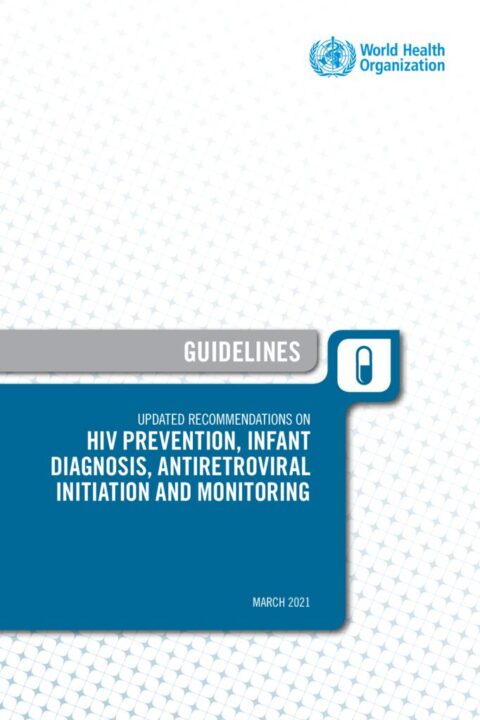
Updated Recommendations on HIV Prevention, Infant Diagnosis, Antiretroviral Initiation and Monitoring
Summary
These guidelines provide new and updated recommendations on the use of point-of-care testing in children under 18 months of age and point-of-care tests to monitor treatment in people living with HIV; the treatment monitoring algorithm; and timing of antiretroviral therapy (ART) among people living with HIV who are being treated for tuberculosis.
New recommendations launched today outline key new actions that countries can take to improve the delivery of HIV testing, treatment and care services by providing greater options for differentiated approaches such as, supporting HIV treatment start in the community, ensuring that children are diagnosed and treated early and that viral load treatment monitoring is more accessible, focused and triggers clinical action.
“These recommendations make it clear that there is now evidence that integrated delivery of people-centred HIV, TB, NCDs, mental health and sexual and reproductive health services will be needed to reach our goals of ending AIDS as a public health issue by 2030.’ said Dr Meg Doherty, Director of the WHO Global HIV, Hepatitis and STI Programmes.
These new recommendations are an update to the 2016 WHO Consolidated Guidelines on the use of ARV drugs for treating and preventing HIV infection. Since the release of the 2016 version, WHO has provided updates in several areas of this guideline – Antiretroviral options for first- and second-line treatment, infant diagnosis, post-exposure prophylaxis, advanced HIV disease and management of cryptococcal infections and delivering HIV services.
The COVID-19 pandemic has presented unique challenges for the continuity of HIV care, and it is critical to ensure that the progress of the past decade is not undone. WHO also remains committed to ensuring the principles for provision of people-centred, harmonized and simplified care, within a public health approach, to enable equitable, evidence-based guidelines leading to greater health impact.
Following an extensive scoping process, WHO convened two guideline development groups that met virtually in September and October of 2020 to formulate recommendations and implementation considerations. The guideline development groups consisted of people living with HIV, policymakers from Ministries of Health, researchers and healthcare providers.
WHO now strongly recommends:
The use of point of care (POC) nucleic acid testing (NAT) to diagnose HIV in infants and children younger than 18 months of age.
To initiate ART as soon as possible within two weeks of starting TB treatment, regardless of CD4 cell count, for adults, adolescents, children and infants living with HIV.
People on ART for at least 6 months and responding well, should be offered clinical visits every 3 to 6months, preferably every six months, if feasible.
People on ART for at least 6 months and responding well, should be offered refills of ART lasting 3 to 6 months, preferably six months, if feasible.
HIV programmes should implement interventions to trace people who have disengaged from care and provide support for re-engagement.
Psychosocial interventions should be provided to all adolescents and young adults living with HIV.
Task sharing of specimen collection and point-of-care (POC) testing with non-laboratory personnel should be implemented when professional staff capacity is limited.
WHO now conditionally* recommends:
Point of care (POC) viral load testing may be used to monitor treatment among people living with HIV receiving ART.
ART initiation may be offered outside of the health facility.
Sexual and reproductive health services, including contraception, may be integrated within HIV services.
Diabetes and hypertension care may be integrated with HIV services.
The guideline development groups also developed good practice statements for HIV service delivery and revised the treatment monitoring algorithm for people living with HIV.
These clinical and service delivery recommendations are being launched and published independently today for rapid use and access by Ministries of Health, HIV programme managers, members of civil society and all other stakeholders. In July 2021, WHO will be updating the Consolidated HIV Guidelines and will integrate all new and older recommendations into one easy to use guidelines document.
WHO would like to thank the experts who shared their valuable time contributing to these updates during the global crisis of COVID-19 and we dedicate this work to all front-line health care workers who are responding to and succeeding in combatting the joint public health crises of HIV and COVID-19.
*A conditional recommendation is issued when the evidence around the benefits and risks of an intervention is less certain.
